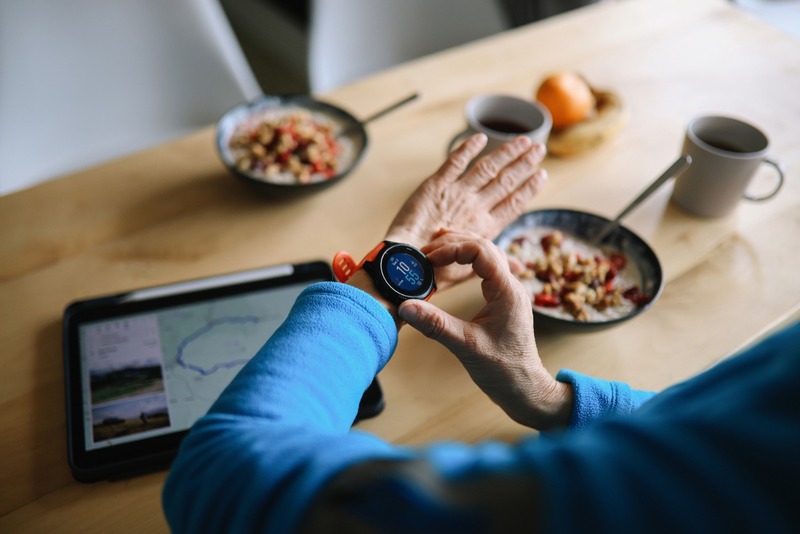News
Childbirth 101
Before attending childbirth classes at Vail Valley Medical Center Marian and Luke Cartin had a somewhat ominous outlook of the hospital. To them it was simply the clean cold white box in which people experienced some of life's most dramatic and emotional moments. The classes however prepped and primed the couple for their first born and showed them they were not about to undertake the momentous occasion in robotic systematic fashion. Rather they'd be surrounded by warmth support and know-how.
This class helped us see the maternity ward as more of a supportive place to give birth rather than just a cold and sterile hospital environment Marian says. Prior to the class I felt unsure about what to expect while we are at the hospital. The class made me more comfortable with the procedures and environment there.
For Luke the classes gave him a sense of belonging beyond the helpless concerned onlooker.
It helped me understand the role I can play in the labor process as well as how great of a resource the hospital staff is for all of us while we are there he says.
THE GAME PLAN
The childbirth classes are offered in a package of four weekly sessions in Vail Eagle and Gypsum or as a two-week fast track course. There is also a hands-on two-hour natural birth class and a sibling class aimed at preparing young people 2 to 5 year olds for their new brother or sister.
Rather than limiting sessions to only mothers typically both parents attend the childbirth classes. Instructor Shama Sambergerova's first order of business is to put everyone at ease.
We cover preparation for labor do a little relaxation and talk about all the things to think about in how to prepare how they can get insurance find doctors get pre-registered for the upcoming baby so they don't have to wait Sambergerova says. Then we get into pre-signs of labor and how to prevent pre-term labor.
The second of the four classes walks soon-to-be parents through the details of how labor begins the signs how to recognize the real signs versus false alarms and identify which stages necessitate a trip to the hospital. The third class gets into intervention what's involved in external and internal monitoring during labor why and how induced births are done and pain medications such as IVs and epidurals. Through this learning process couples (each class has from five to 10) are given their own space where expecting mothers practice positions and coping strategies for various stages of labor while partners practice massage and comfort techniques.
I teach them how to be a team how the mom needs to speak up 'this feels good this doesn't' 'push harder' and let the guys know that labor changes and her needs will change as well Sambergerova says. In the beginning she doesn't need as much then later she needs more massaging and encouragement. I think the dads really appreciate it because they get to practice and they learn how they can help.
The final class prepares couples for taking care of mom after delivery offering tips for postpartum care the hospital stay going home and how to get ready for the coming weeks of that new chapter of everyone's life.
SUPPORT SYSTEM
Because the whole birth process is usually brand new to most couples that attend the classes there is an element of hesitation at first but it doesn't take long before a sense of kinship sets in and everyone feels comfortable with what awaits them as a whole.
All it took was a joke to relax everyone and help us realize that we are all in the same boat Marian says. It was nice to be around others who could relate to the very things we are going through.
Okay so you've got the delivery part down. But what happens when you get home and there's this little human being to take care of? The medical center also offers once-a-month baby care and breastfeeding classes. The breastfeeding class utilizes dolls so new mothers get hands-on practice of holding techniques and also covers trouble-shooting with a lactation expert. The baby care class coaches parents on how to handle a first bath what to do if the baby gets sick and general daily responsibilities.
We encourage moms who are pregnant or moms who had their babies already to come to this class Sambergerova says. Martina one of the nurses goes through typical and atypical situations at home how to look at these as normal or emergencies.
Ultimately the VVMC Women and Children's classes provide a wealth of knowledge to parents for smoother sailing in this life-changing endeavor. The benefits of the classes reach beyond their private households.
Really it helps the nurses for parents to be educated and know what to expect Sambergerova says. It helps us for parents to know we have standard procedures and to let them talk to care providers about what they can have and what they can't have.
THE CLASSES
Childbirth: four weekly sessions $60
Fastrack Childbirth: two weekly sessions $45
Natural Birth: two hours $25
I Love My Sibling: two hours $15
Other classes include Breastfeeding Baby Care and Baby and Me. For more information please visit vvmc.com/childbirth.
More News
-
New!
More

First Chair to Last Call: What Does Alcohol Really Mean For Your Health?
In nearly every Colorado ski town, some iteration of the neon sign blares its play-hard-party-harder anthem. It’s a not-so-subtle nod to mountain party culture, a lifestyle that normalizes combining sports and outdoor adventures with heavy drinking and partying. In Eagle County, après culture, high-altitude living and outdoor performance have coexisted for as long as locals have been sliding on snow. But how much is too much at altitude? And what role do social support systems play in helping residents find balance?
-
New!
More

Counting More Than Steps: How Wearables Can Help (or Hinder) Your Health
From step counts to sleep stages, heart rate variability to blood sugar spikes, wearable devices are giving us a front-row seat to what’s happening inside our bodies. Strapped to wrists, slipped onto fingers or wrapped around our biceps, wearables like the Oura Ring or Whoop strap promise insight and advice in the quest for better health.
-
More

Cass Barham and Sarah Crabtree Honored As Recipients of Vail Health Elevate Award
Cass Barham and Sarah Crabtree, both lab techs at Vail Health Hospital, have been named recipients of the Vail Health Elevate Award. Vail Health created the Elevate Award in June 2022 to give patients and their families an opportunity to nominate and thank employees who have touched their lives in some way.
